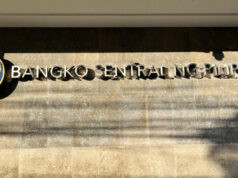PHL insurance gap at $4.9 billion
THE PHILIPPINES is one of the countries with the largest insurance gap even as the country is susceptible to natural disasters and effects of climate change, a report from Lloyd’s said.
In a statement on Monday, the insurance and reinsurance market said the country had the third-highest insurance gap out of the 43 countries surveyed with $4.9 billion, equivalent to 1.3% of its gross domestic product (GDP).
The Philippines only lagged behind Bangladesh which had an insurance gap equivalent to 2.1% of GDP and Indonesia with 1.4% of GDP.
In terms of underinsurance, or the expected losses that will exceed insurance coverage, the country’s shortfall amounted to $4.2 billion.
Meanwhile, the country’s insurance penetration, or total premiums as a percent of the economy, remains at 0.6% of GDP, although higher than the 0.4% in its 2012 report.
Lloyd’s said the insurance gap in the country is still prevalent as the Philippines is among the most exposed to natural disasters.
“Bangladesh, India, Vietnam, Philippines Indonesia, Egypt and Nigeria each have an insurance protection rate of less than 1%. They are also among the most exposed countries to risks such as climate change and some of the least able to fund recovery efforts,” Lloyd’s said in its 2018 Underinsurance Report.
The report cited the Joint Typhoon Warning Centre, saying 19 typhoons enter the Philippine area of responsibility, nine of which make landfall.
Aside from this, the Philippines is also prone to volcanic eruptions and earthquakes as the country is situated along the Pacific Ring of Fire.
Lloyd’s said Filipinos are still unable to invest on insurance policies as annual incomes remain low at just under $3,000 per capita.
“This has a dampening effect on investments in insurance, disaster prevention measures and early warning systems that help disasters before they occur,” the UK-based insurer said.
Last month, the government met with officials from Lloyd’s as well as the World Bank in London as they seek to expand the risk management policy on government assets as it ramps up its infrastructure thrust amid natural calamities.
“We are embarking on a large infrastructure program and we expect to spend somewhere $150 and 170 billion in improving our physical infrastructure. Leaving it and building it without thinking about risk management is irresponsible,” Finance Secretary Carlos G. Dominguez III earlier said. — Karl Angelo N. Vidal



